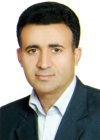| نویسندگان | Hydar Ebrahimi, Reza Ghazavi< Haji Karimi |
|---|---|
| نشریه | WATER RESUURCES MANAGEMENT |
| شماره صفحات | 1939 |
| شماره مجلد | 30 |
| نوع مقاله | Full Paper |
| تاریخ انتشار | 2016-06-11 |
| رتبه نشریه | علمی - پژوهشی |
| نوع نشریه | الکترونیکی |
| کشور محل چاپ | ایران |
| نمایه نشریه | ISI ,SCOPUS |
چکیده مقاله
Quantifying recharge from agricultural areas is important to sustain long-term groundwater use, make intelligent groundwater allocation decisions, and develop on-farm water management strategies. The scarcity of data in many arid regions, especially in the Middle East, has necessitated the use of combined mathematical models and field observations to estimate groundwater recharge. This study was designed to assess the recharge contribution to groundwater from rainfall and irrigation return flow in the Mosian plain, west of Iran. The Inverse modeling approach and remote sensing technology (RS) were used to quantify the groundwater recharge. The recharge for steady–state conditions was estimated using the Recharge Package of MODFLOW. The land-use map for the research area was produced using remote sensing and satellite images technology. According to results, groundwater recharge from the rainfall and irrigation return flow was at the rate of 0.15 mm/day. The recharge to the groundwater from rainfall was about 0.08 mm/day (10.8 % of total rainfall). The average of groundwater recharge contribution in the study area was about 0.39 mm/day that include 15.2 % of the total water used in the irrigated fields. We can conclude that irrigation water is the most important resource of groundwater recharge in this area, consequently, it should be integrated into relevant hydrological models as the main source of groundwater recharge.
